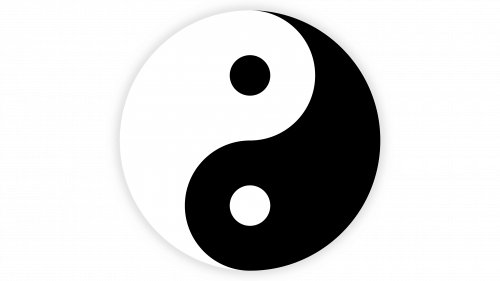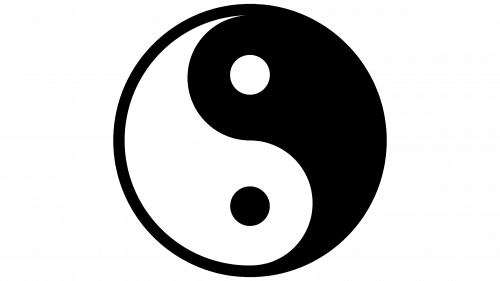The Yin Yang logo represents the fundamental model of all existence, and its concepts are rooted in Chinese natural philosophy and cosmology. The two elements depicted in the emblem reveal the mechanism of the universe’s creation and also demonstrate its nature.
Yin Yang: Brand overview
Yin and Yang are central to Chinese philosophy’s explanation of cosmogenesis and the universe’s formation. Though there aren’t many recorded documents from that era, it is challenging to pinpoint the precise genesis of this idea, which started to take shape in antiquity.
Chinese writings from the Zhou era (1046–256 BCE) include the earliest references to Yin and Yang. At the time, these forces were considered fundamental cosmic elements that controlled every cosmic process.
One of the earliest works of Chinese philosophy, the “I Ching” (Book of Changes), portrays these forces as two opposed yet complementary energies. Yang represents light, activity, and the male principle, while Yin is linked to darkness, inactivity, and the feminine principle.
The Warring States era (475-221 BCE) was a pivotal point in the evolution of this concept. The Yin-Yang School, a philosophical school of naturalists, created a more thorough idea of how these two forces interacted throughout this period.
This philosophy holds that these elements are always changing and evolving. The universe is in a state of dynamic equilibrium since they are not static but constantly transform into one another. This process was considered the basis for all alterations and developments in society and the natural world.
Much later, the forces were represented graphically as a circle split into two halves, black for Yin and white for Yang, with tiny circles of the opposing color in each half. This emblem was first seen during the Han period, which lasted from 206 BCE to 220 CE.
In cosmogenesis, these elements represent the moment the universe’s original unity splits into two opposites. This procedure was thought to be essential to the development of global diversity.
Ancient Chinese traditions held that an undivided wholeness called Taiji (the Great Ultimate) existed before the formation of Yin and Yang. It was believed that the division of Taiji into Yin and Yang was the initial stage in creating the material world.
It is important to remember that Chinese philosophy does not view these forces as complete opposites. Rather, they always include the seeds of one another, represented by the little circles in each half of the Yin-Yang sign that are the opposite color.
The Chinese largely understood cosmogenesis because of this idea of the interpenetration of opposites. It clarified how the world’s diversity might result from an initial oneness and how it keeps ties to one source.
In Daoist philosophy, these elements are seen as expressions of the Dao, the universal principle that underlies all existence. This doctrine holds that the Dao influences Yin and Yang’s successive separation and reunification, which results in cosmogenesis.
Meaning and History
What is Yin-Yang?
It is a fundamental concept in Chinese philosophy and culture, representing the idea of duality and balance in the natural world. They are the two complementary forces that make up all aspects and phenomena of life. Yin is associated with darkness, passivity, femininity, and coldness, while Yang is associated with light, activity, masculinity, and warmth. Together, they symbolize opposites’ dynamic interaction and balance, suggesting that harmony is achieved when these forces are balanced. The symbol representing a circle divided into two rotating halves, black (Yin) and white (Yang), illustrates this interdependence and the presence of each within the other.
This iconic symbol has a profound meaning, explaining the purpose of human existence and the structure of the world. It is simple yet important, minimalist yet significant, elementary yet philosophical. It is based on ancient knowledge encompassing the complex mechanism of opposites complementing each other. Experts suggest Yin Yang originated in the 8th to the 7th centuries BC and was fully formed as a separate doctrine in the 5th century BC.
Its concept is multifaceted because it shows the world’s complexity through simple meanings. Thus, the Yin Yang logo conveys paired concepts of everything related to nature and humanity:
- Female and male;
- Light and darkness;
- Rationality and intuition;
- Activity and passivity;
- Hardness and softness;
- Obedience and firmness;
- Day and night;
- Heaven and earth;
- Life and death.
In other words, the Yin-Yang emblem is comprehensive and demonstrates the binary world order system. It states that everything is in motion and constantly changing, transitioning from one to another. The monochrome symbol also indicates the mutual complementarity of opposites, which maintains the continuous cycle. According to the logo concept, the purpose of existence is to ensure balance, through which harmony arises.
The complex universal philosophy is graphically expressed very simply. The emblem features two teardrop-shaped elements that endlessly follow one another. They curve smoothly like waves, trying to engulf each other, but cannot due to the color difference. Thanks to the contrast, the boundaries are very clearly defined and cannot merge into one.
At the same time, the curved elements form a complete circle where passions swirl, life develops, and the universe moves. This is the essence of harmony, giving impetus to eternal motion. Essentially, the Yin Yang logo is the very Perpetuum Mobile that humanity seeks. The circle symbolizes progress because, presumably, it rotates continuously.
Simultaneously, the emblem confirms that nothing exists in pure form—everything intersects and intertwines. This idea is expressed through the black and white dots on the teardrop-shaped elements: the white is depicted on a black background, and the black is on a white background. In other words, they prove that light and darkness alternate, replacing each other. Moreover, there is an opposite: light burns in darkness, and there is darkness in light.
This philosophy is expressed through the timeless logo, which has a simple structure and contains everything—from life to death, from falsehood to truth, from the universe to its condensation—in the form of a single dot on a contrasting background. The circular shape perfectly conveys the cycle of matter on a terrestrial and galactic scale.




